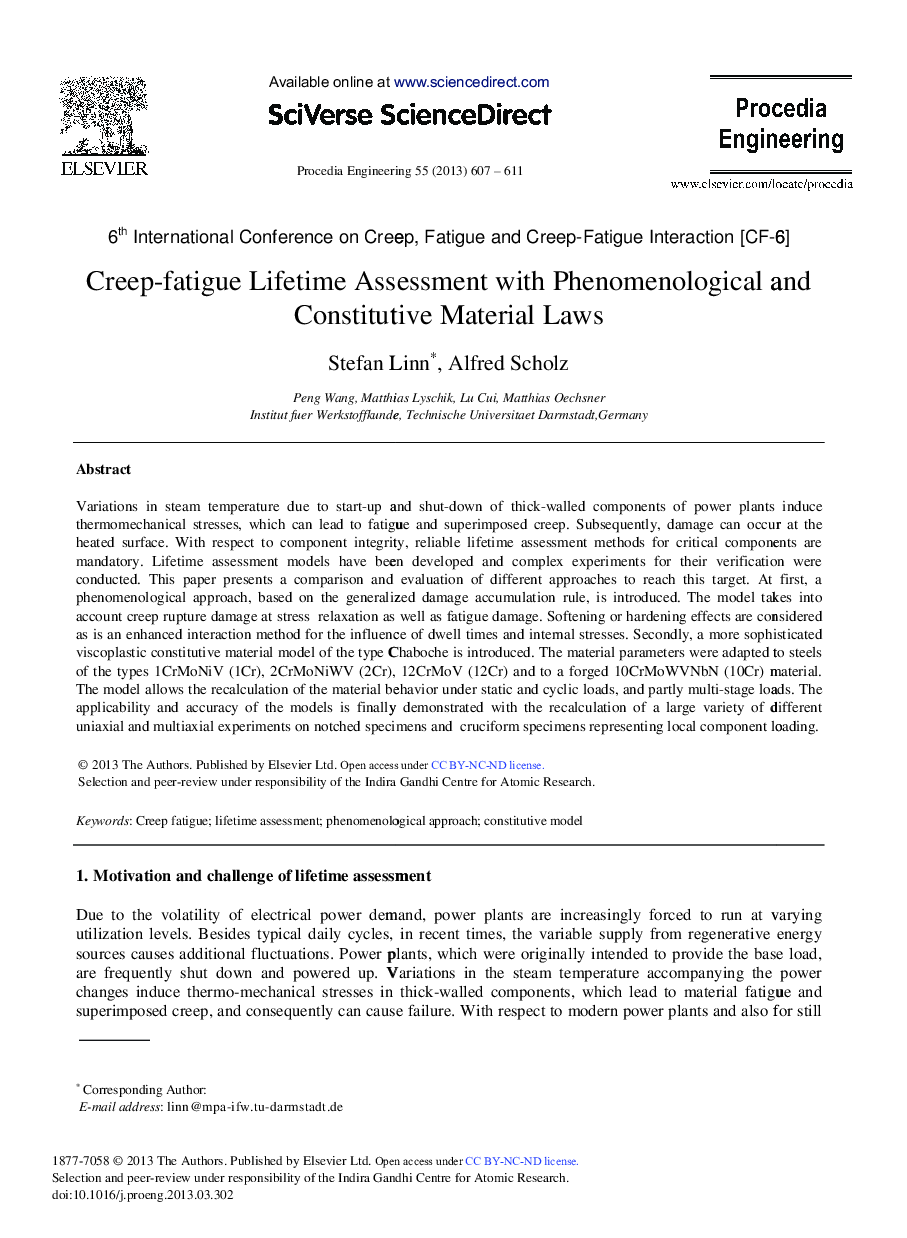| Article ID | Journal | Published Year | Pages | File Type |
|---|---|---|---|---|
| 860540 | Procedia Engineering | 2013 | 5 Pages |
Variations in steam temperature due to start-up and shut-down of thick-walled components of power plants induce thermomechanical stresses, which can lead to fatigue and superimposed creep. Subsequently, damage can occur at the heated surface. With respect to component integrity, reliable lifetime assessment methods for critical components are mandatory. Lifetime assessment models have been developed and complex experiments for their verification were conducted. This paper presents a comparison and evaluation of different approaches to reach this target. At first, a phenomenological approach, based on the generalized damage accumulation rule, is introduced. The model takes into account creep rupture damage at stress relaxation as well as fatigue damage. Softening or hardening effects are considered as is an enhanced interaction method for the influence of dwell times and internal stresses. Secondly, a more sophisticated viscoplastic constitutive material model of the type Chaboche is introduced. The material parameters were adapted to steels of the types 1CrMoNiV (1Cr), 2CrMoNiWV (2Cr), 12CrMoV (12Cr) and to a forged 10CrMoWVNbN (10Cr) material. The model allows the recalculation of the material behavior under static and cyclic loads, and partly multi-stage loads. The applicability and accuracy of the models is finally demonstrated with the recalculation of a large variety of different uniaxial and multiaxial experiments on notched specimens and cruciform specimens representing local component loading.
